A Matter of Life and Death
The Rt. Rev. Frank S. Logue gave this sermon for the clergy renewal of vows and Chrism Mass at Annunciation in Vidalia and Trinity in Cochran on April 14-15, 2025.
A Matter of Life and Death
A Sermon for the Renewal of Vows for Clergy
John 12:1-11 and John 12:20-36
“Lazarus, come out!”
Jesus, the Word made flesh, cries out this command at the grave of his friend with the tracks of the tears still evident in the dust clinging to his face from the long walk to Bethany.
John recalls the incident that marked the beginning of the end for his friend and Rabbi, “The dead man came out, his hands and feet bound with strips of cloth, and his face wrapped in a cloth. Jesus said to them, ‘Unbind him, and let him go.’”
The Beloved Disciple knew Jesus’ cruciform life shaped the warp and woof of the cosmos. John tells us, “All things came into being through him, and without him not one thing came into being. What has come into being in him was life, and the life was the light of all people.”
Just as when the earth was a formless void and darkness covered the face of the deep, the words, “Let there be light!” called all life into being, so the cry “Lazarus, come out!” marked the beginning of the end of the reign of sin and death.
The Fourth Gospel makes this clear in our reading for Monday in Holy Week where we learn that the crowds that flocked to Bethany, “came not only because of Jesus but also to see Lazarus, whom he had raised from the dead.” Then in our reading for Tuesday in Holy Week, some Greeks seek out “Philip, who was from Bethsaida in Galilee, and said to him, ‘Sir, we wish to see Jesus.’”
Jesus can read the signs. He knows the Chronos of the Passover for this year will align with the Kairos of his sacrificial death. He says, “The hour has come for the Son of Man to be glorified. Very truly, I tell you, unless a grain of wheat falls into the earth and dies, it remains just a single grain; but if it dies, it bears much fruit.”
Jesus calling Lazarus out from the tomb is the turning point. The Beloved Disciple slows down the steady pace he had maintained. John used ten chapters to propel us from the Word being made flesh through almost all of Jesus’ years of active ministry. The remaining eleven chapters of the Gospel describe the little more than two weeks that passed between Lazarus coming out of the grave and Jesus cooking breakfast on the beach for his disciples.
Four chapters alone are given to Jesus’ last words on the night before he died. Jesus taught us that he is the vine and we are the branches. He prayed for his followers and added, “I ask not only on behalf of these, but also on behalf of those who will believe in me through their word, that they may all be one. As you, Father, are in me and I am in you, may they also be in us, so that the world may believe that you have sent me.”
So that the world may believe.
This is John’s sole purpose in writing his Gospel: to bring people to faith in Jesus. John writes, “Now Jesus did many other signs in the presence of his disciples, which are not written in this book. But these are written so that you may come to believe that Jesus is the Messiah, the Son of God, and that through believing you may have life in his name.”
John knew the synoptic Gospels but longed to tell the Good News from the cosmic, more mystical dimension he had come to understand, and in the process to emphasize that knowing Jesus is a matter of life and death. Knowing Jesus remains a matter of life and death.
You know this. Ministry offers moments when God shows up in ways that take your breath away. Those moments do not come as often as I wish and there is so much of life in the church from one of these experiences to the next that it is all too easy to despair. We preach from the depths of our being, sharing the Gospel as we know it, only to see parishioners hurting one another, lashing out at us or worse, our families, while others who have faithfully shown up seem to have nothing to draw from when tragedy strikes. There is so much one faces in leading a church. The people of God can be exhausting even on their best days.
Yet, I can’t quit this life of service as I have experienced God showing up in my life and in the lives or others, not always how and when I wish, but with a dependability that has led me to put my trust in God and to encourage others to do the same. This is, of course, not about faith that works solely in the easy times in life. Our faith in Jesus speaks to chaos and darkness so that even at the grave we can sing God’s praises. I know this from sitting at the bedside of those dying in Hospice Care or more painfully standing by parents in the Emergency Room as their child’s life slips away and have also been the father with my daughter’s life hanging in the balance.
I have seen people move from death back to life in ways that fill me with awe. I have prayed with a Mom across years as her son clawed his way back to the light from the deep darkness of a heroin addiction. This was a rocky path, with a series of fits and starts, rehab and relapse, rehab and relapse, desperation, crime, and arrest. Then rehab and relapse, rehab and relapse, until he could find his way back to life. The danger of falling back always remains, but he is now years sober. When this man names the living God brought him back from the dead, I can only agree and give thanks.
The wider view that John offers in his Gospel, beginning with the Word made flesh living among us fits with the Apostle Paul seeing the cosmic battle we face in proclaiming that “Our struggle is not against enemies of blood and flesh, but against the rulers, against the authorities, against the cosmic powers of this present darkness, against the spiritual forces of evil in the heavenly places” (Ephesians 6:12).
The principalities of this present darkness put the Son of God to death on a cross. God brought Jesus from the grave, not resuscitated as Lazarus who would die again, but in a resurrection in which life conquered death. Jesus rose to never die again in order to show us that love defeats hate. The powers of this present age are still trying to convince us that we need to get what we can however we can, while also whispering in our ear that we are not enough, we will never measure up. This is not the path of life, but the way of a world turned from God.
We serve in a time of decline with a rebound from the pandemic that still falls short of our previous heights. It would be easy to simply manage the decline. Yet we serve in communities filled with people who need to know the life-giving Good News. They know churches. They know lots of Christians. They know of Jesus. But many of our neighbors do not know that there is an escape route form the cycle of shame and fear. They need to know they can enjoy the grace of forgiveness and healing. They need to experience the surpassing joy that comes from feeling in their marrow that they matter to the maker of heaven and earth. They need to be unbound and set free from sin and death.
The church needs to be set free as well. For the church isn’t dying, we are killing when we allow our concern to be for preserving an institution rather than being the Body of Christ in the times we are given to serve. Our call is not to save the Church. Our call is to serve as witnesses to the Truth of Jesus. In fractured times, the world needs people who point to the deeper reality that what unites us matters more than what separates us as every human is made in the image and likeness of God.
Without your witness, and the witness of those in your congregation, some of our neighbors would continue to be lost, left out, or marginalized. Your call matters all the more as our communities are so very divided while everyone on each side of the political divide and those caught in the middle all so desperately need the words of love and life rather than hatred and death. Your call as a deacon or priest is of eternal significance.
The same Word of God that said, “Let there be light!” called Lazarus from the grave, and continues to speak life to all on the path that leads to death. This week and every week, our call is not to save the world or even the church. Our call is to faithfully point beyond ourselves to Jesus so that the world may believe.
Amen.

 The 1Book1Diocese read for Lent 2025 will be Rowan Williams’ deeply wise book Passions of the Soul. In this brief text the former Archbishop of Canterbury tells how self-awareness about our instincts and emotions can offer practical assistance in diagnosing what is binding us to unhelpful and potentially destructive patterns of thinking. In the process, Williams shows how these thoughts like pride or anger are not necessarily wrong in themselves if we attend to these thoughts properly. He states, “For the Eastern Christian writers, ‘passion’ is the whole realm of instinct, reaction, coping mechanisms, and this is the level at which complications arise. We cannot live without these things if we are to be human at all; yet unless we understand and in some degree transfigure them, we are trapped in something less than human.”
The 1Book1Diocese read for Lent 2025 will be Rowan Williams’ deeply wise book Passions of the Soul. In this brief text the former Archbishop of Canterbury tells how self-awareness about our instincts and emotions can offer practical assistance in diagnosing what is binding us to unhelpful and potentially destructive patterns of thinking. In the process, Williams shows how these thoughts like pride or anger are not necessarily wrong in themselves if we attend to these thoughts properly. He states, “For the Eastern Christian writers, ‘passion’ is the whole realm of instinct, reaction, coping mechanisms, and this is the level at which complications arise. We cannot live without these things if we are to be human at all; yet unless we understand and in some degree transfigure them, we are trapped in something less than human.” In 2025, we will also offer a 1Book1Diocese read for Easter through Pentecost of Holy Mysteries: Encountering the Risen Jesus by Frank and Victoria Logue. As with their Advent through Epiphany devotional
In 2025, we will also offer a 1Book1Diocese read for Easter through Pentecost of Holy Mysteries: Encountering the Risen Jesus by Frank and Victoria Logue. As with their Advent through Epiphany devotional 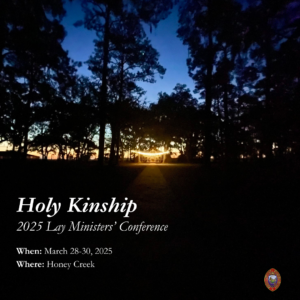
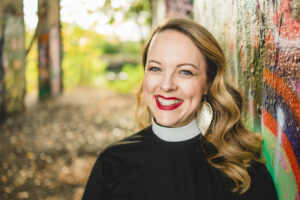 Callie Swanlund
Callie Swanlund Anders found the camera loaded with color film and quickly captured the view in a photo called Earthrise. Everything any human had ever known could be seen in what looked to all like a blue marble hovering over the bleak lunar landscape and otherwise alone the vast emptiness of space. That startlingly new perspective, seeing earth from space, made all of human existence appear smaller, more fragile, than ever before.
Anders found the camera loaded with color film and quickly captured the view in a photo called Earthrise. Everything any human had ever known could be seen in what looked to all like a blue marble hovering over the bleak lunar landscape and otherwise alone the vast emptiness of space. That startlingly new perspective, seeing earth from space, made all of human existence appear smaller, more fragile, than ever before. 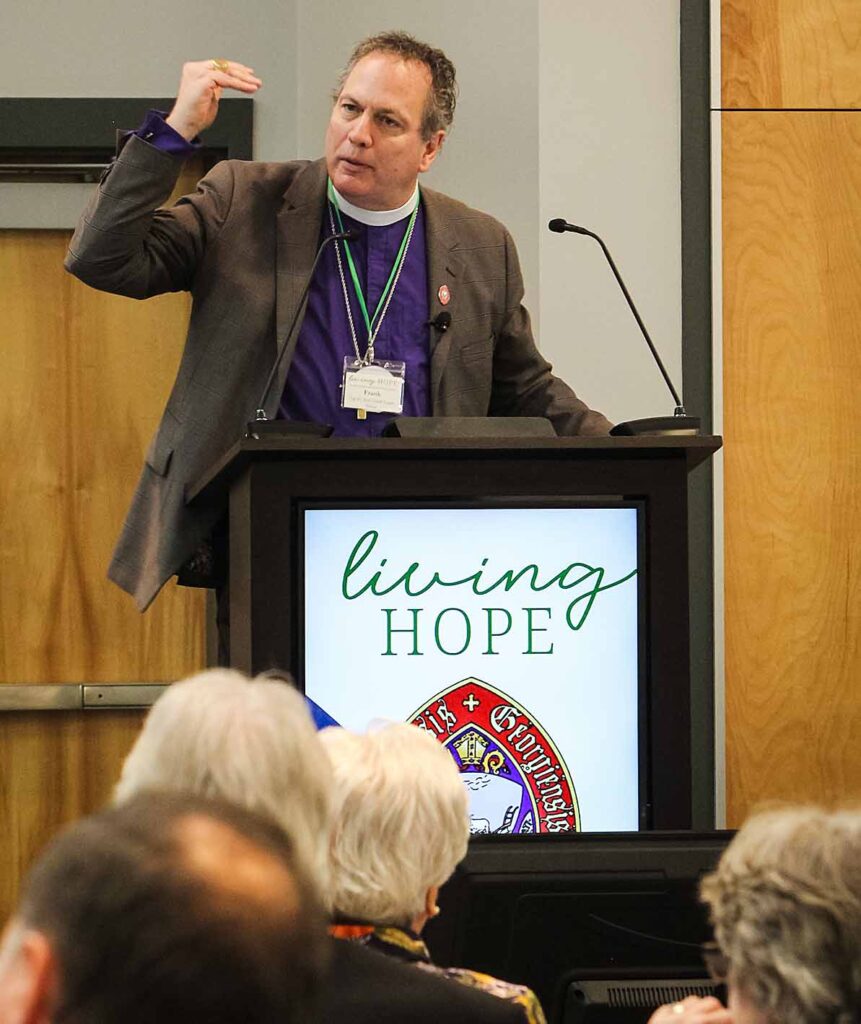 We see this in the Acts of the Apostles as in the first seven chapters of this story of what happened to Jesus’ followers after his resurrection we see how they preach with boldness and thousands come to faith. Then as that seventh chapter is ending, the Deacon Stephen is stoned to death. A persecutation breaks out against the Jesus Movement and the community scatters. Then in Acts 8, we see how God uses this tragedy to spread the Gospel. Disciples who would have stayed together in Jerusalem are soon spreading the grace, mercy, and forgiveness they have found to people who would have remained lost and left out if the faith had stayed within that small geographic area.
We see this in the Acts of the Apostles as in the first seven chapters of this story of what happened to Jesus’ followers after his resurrection we see how they preach with boldness and thousands come to faith. Then as that seventh chapter is ending, the Deacon Stephen is stoned to death. A persecutation breaks out against the Jesus Movement and the community scatters. Then in Acts 8, we see how God uses this tragedy to spread the Gospel. Disciples who would have stayed together in Jerusalem are soon spreading the grace, mercy, and forgiveness they have found to people who would have remained lost and left out if the faith had stayed within that small geographic area.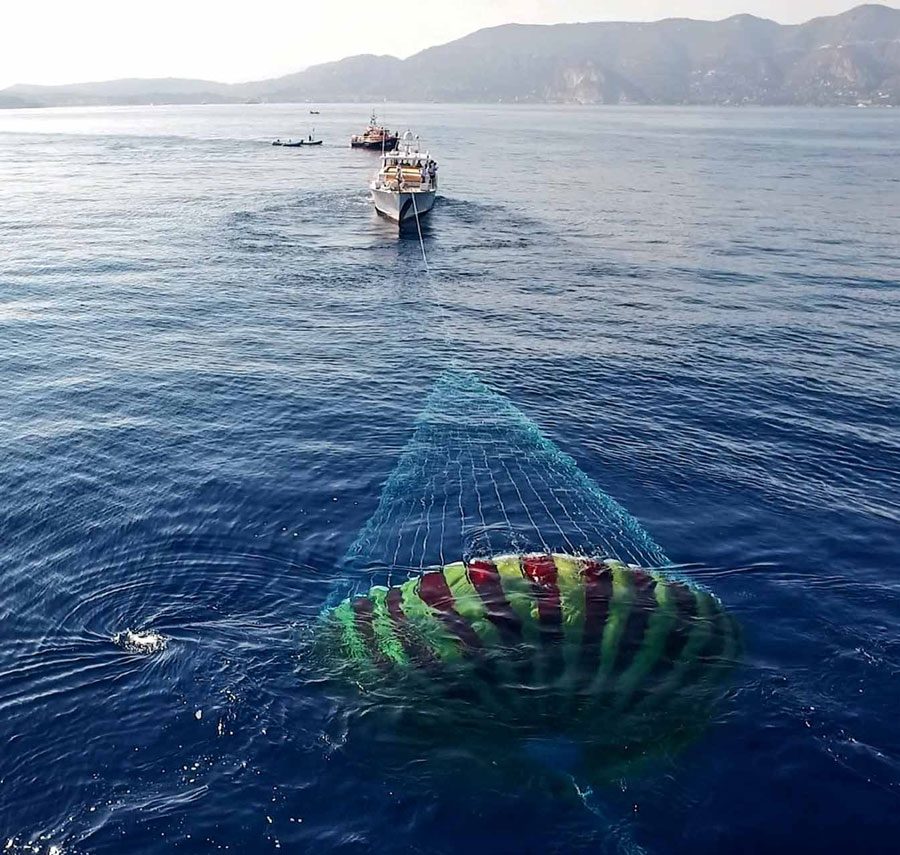 This sea anchor stops the craft from drifting downwind. The sea anchor keeps the bow pointing windward, facing the waves head on. The reason this image speaks to me is that it shows that we are not being blown about by the winds of the culture or doing what the open water equivalent is of an ostrich burying its head. A sea anchor offers real stability, keeping a boat from being tossed to and fro and blown about by every wind. Anchored to the sea itself, the boat is not pushed off course, but turned into the storm in what could otherwise be an overcoming sea, we can not only endure, but in the words of the hymn Joyful, Joyful, we can experience the “Wellspring of the joy of living, ocean-depth of happy rest.”
This sea anchor stops the craft from drifting downwind. The sea anchor keeps the bow pointing windward, facing the waves head on. The reason this image speaks to me is that it shows that we are not being blown about by the winds of the culture or doing what the open water equivalent is of an ostrich burying its head. A sea anchor offers real stability, keeping a boat from being tossed to and fro and blown about by every wind. Anchored to the sea itself, the boat is not pushed off course, but turned into the storm in what could otherwise be an overcoming sea, we can not only endure, but in the words of the hymn Joyful, Joyful, we can experience the “Wellspring of the joy of living, ocean-depth of happy rest.”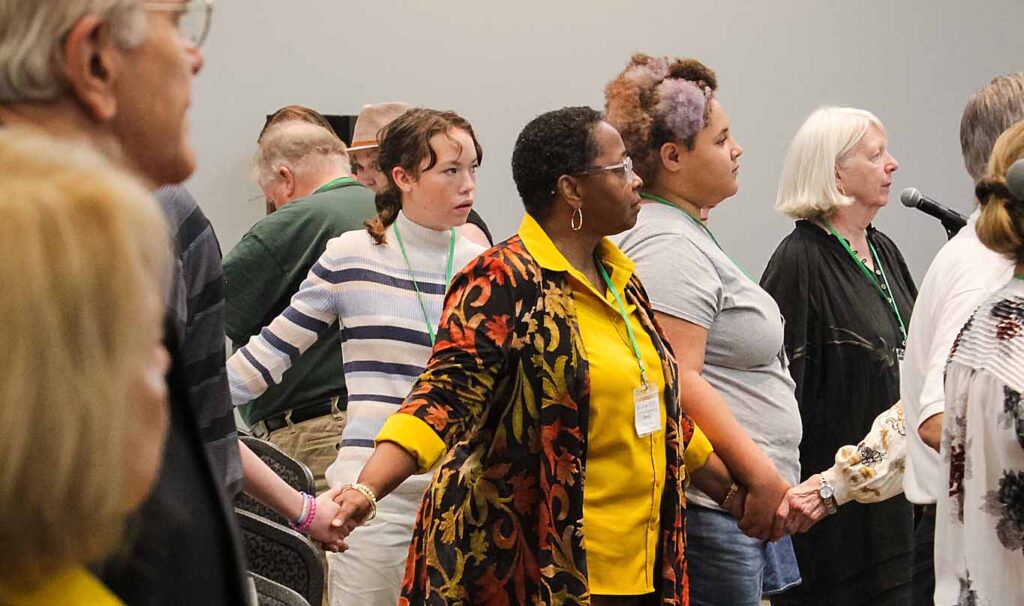
 Since we last met in convention in Augusta, that city has been hit hard by Hurricane Helene. As I said in my sermon this morning, the aftermath showed Episcopalians serving their neighbors including at Saint Paul’s where our previous convention Eucharist was celebrated and the Byllesby Center which is supported significantly by Good Shepherd where the convention met in the school gym. While many of us have been able to move on, it will be quite a while before many people in Central and South Georgia can say their lives are back to normal. Crisis reveals what is already present in a community and the Hurricane revealed the faith and resilience of our people and communities.
Since we last met in convention in Augusta, that city has been hit hard by Hurricane Helene. As I said in my sermon this morning, the aftermath showed Episcopalians serving their neighbors including at Saint Paul’s where our previous convention Eucharist was celebrated and the Byllesby Center which is supported significantly by Good Shepherd where the convention met in the school gym. While many of us have been able to move on, it will be quite a while before many people in Central and South Georgia can say their lives are back to normal. Crisis reveals what is already present in a community and the Hurricane revealed the faith and resilience of our people and communities.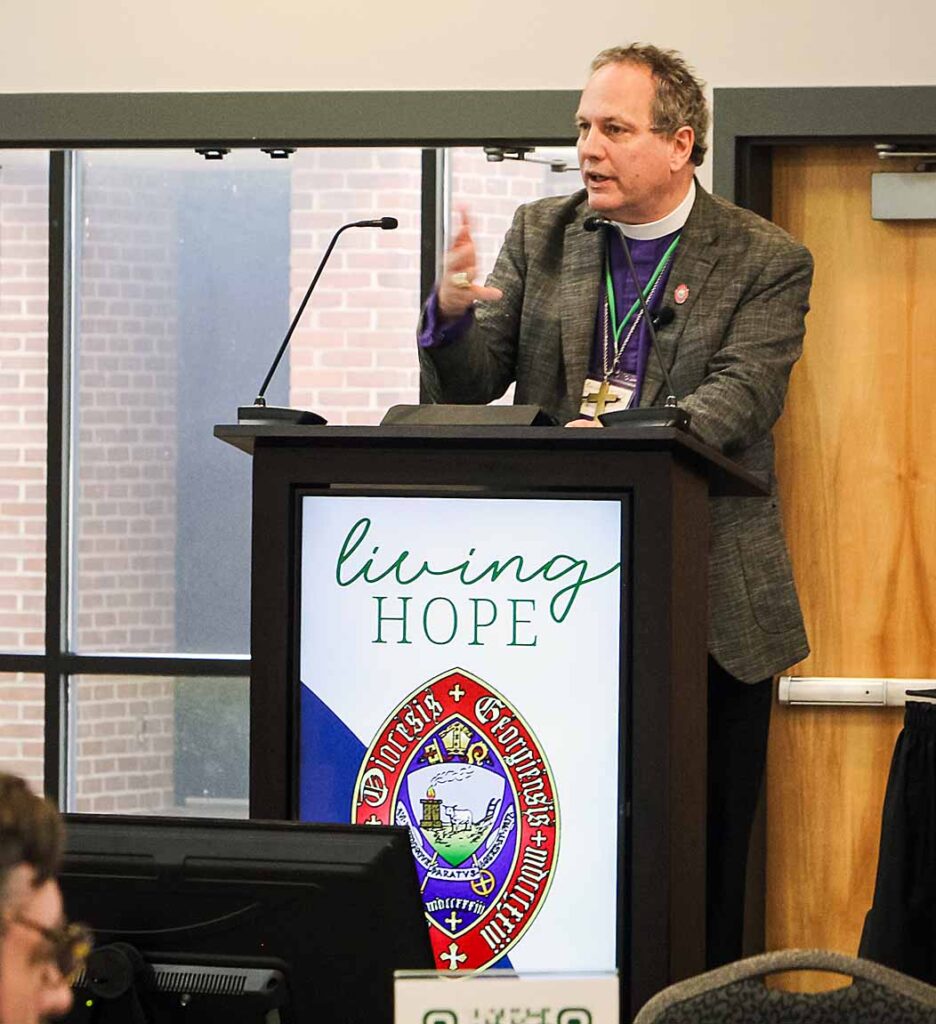 As I have been getting feedback from the listening sessions and the survey, I have seen the direction the Diocese wishes to move. While there is more to hear, I already see clearly the ways in which the diocesan staff has to be more responsive to you, the people of the Diocese. There are two tiers in the Diocese—those who know staff well and have no trouble getting what they need from staff and those who don’t know who to call or how to learn where to go for help. This is not based on the size of a congregation, but the familiarity with the team. This cannot continue. To address this, I am taking a multi-pronged approach. We are making which staff to call for what is more readily evident on the website. We will also have a complete website redesign in 2025 with the sole goal of making it easier for you to find who you need and what you need. In addition, our phone system now lets a caller more easily reach the person you need. Additionally, I know that I need a Chief of Staff as my travel schedule has me away from the office enough that the staff needs a leader who is with them when I am traveling. Some other changes on staff are taking some responsibilities off of Canon Loren Lasch’s load and I am naming her the Canon to the Ordinary and Chief of Staff. This acknowledges some of what has already been a part of her work with the staff and leaning into it more.
As I have been getting feedback from the listening sessions and the survey, I have seen the direction the Diocese wishes to move. While there is more to hear, I already see clearly the ways in which the diocesan staff has to be more responsive to you, the people of the Diocese. There are two tiers in the Diocese—those who know staff well and have no trouble getting what they need from staff and those who don’t know who to call or how to learn where to go for help. This is not based on the size of a congregation, but the familiarity with the team. This cannot continue. To address this, I am taking a multi-pronged approach. We are making which staff to call for what is more readily evident on the website. We will also have a complete website redesign in 2025 with the sole goal of making it easier for you to find who you need and what you need. In addition, our phone system now lets a caller more easily reach the person you need. Additionally, I know that I need a Chief of Staff as my travel schedule has me away from the office enough that the staff needs a leader who is with them when I am traveling. Some other changes on staff are taking some responsibilities off of Canon Loren Lasch’s load and I am naming her the Canon to the Ordinary and Chief of Staff. This acknowledges some of what has already been a part of her work with the staff and leaning into it more. Now, Jesus joins Cleopas and the unnamed other disciple on the road. They are in the depths of despair as they walk toward Emmaus. Neither of these first followers of Jesus know this seeming stranger on the road to be their Rabbi. This lack of recognition reveals the way despair clouds our vision and hinders us from seeing rightly.
Now, Jesus joins Cleopas and the unnamed other disciple on the road. They are in the depths of despair as they walk toward Emmaus. Neither of these first followers of Jesus know this seeming stranger on the road to be their Rabbi. This lack of recognition reveals the way despair clouds our vision and hinders us from seeing rightly.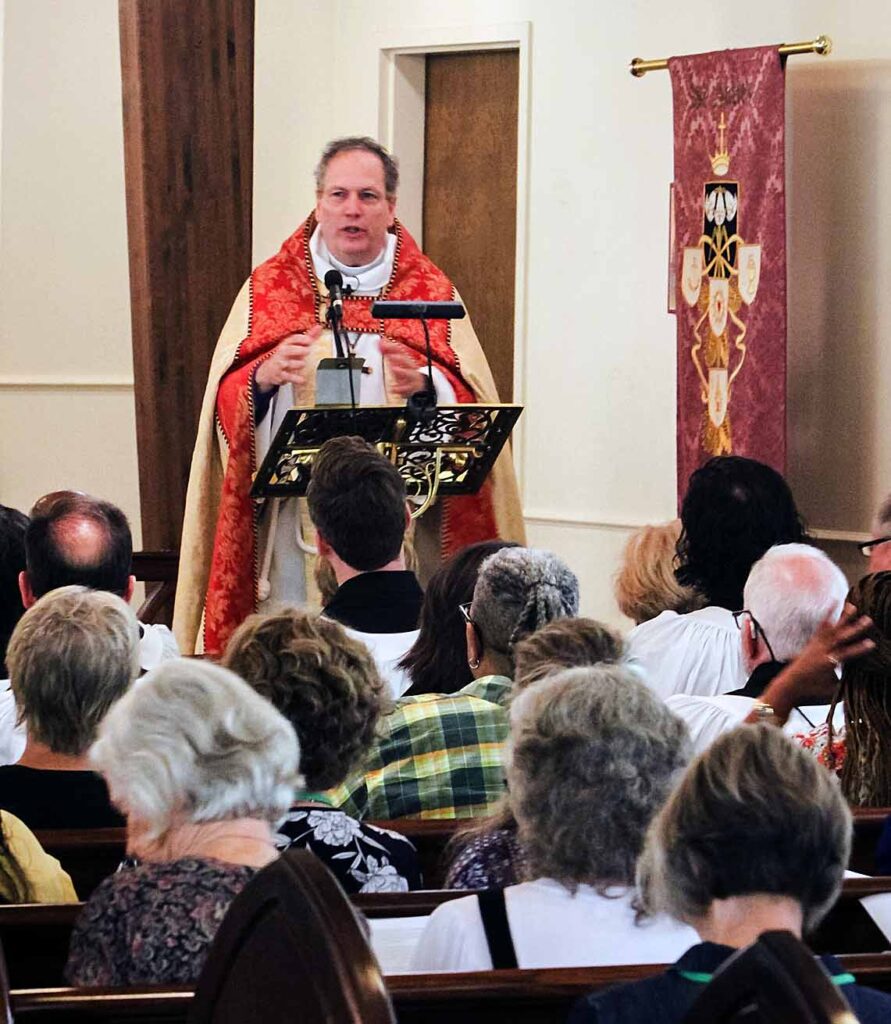 I want to pause here to note how the Enlightenment that led to the gifts of modernity also found its way into our faith. The Desert Mothers and Fathers saw the struggle of good and evil playing out not just in their lives as they saw the cosmic struggle of good and evil playing itself out within their own hearts as they sought through their prayers and fasting to overcome temptations. They lived in a world shot through with a sense of transcendence, the knowledge that what we see is not all that exists in the universe as the time we live in is held in eternity.
I want to pause here to note how the Enlightenment that led to the gifts of modernity also found its way into our faith. The Desert Mothers and Fathers saw the struggle of good and evil playing out not just in their lives as they saw the cosmic struggle of good and evil playing itself out within their own hearts as they sought through their prayers and fasting to overcome temptations. They lived in a world shot through with a sense of transcendence, the knowledge that what we see is not all that exists in the universe as the time we live in is held in eternity. 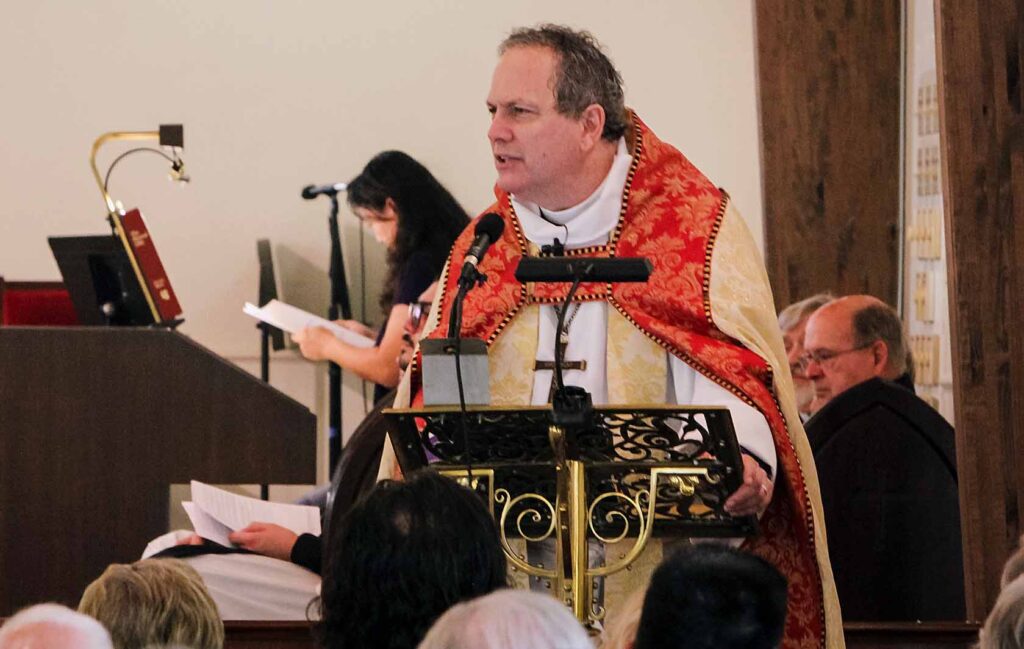 Seeing the ways God has broken into your life before gives confidence when looking to an uncertain future. For example, we can look at decline in church participation across the generations and join others in despair. Or we can look to the ways that the living God has been present with us in the past, is with us now, and already holds the future. That perspective makes it possible to be both realistic about where we are and what we face while remaining hopeful about the future. Whatever causes us to despair, when we tap into the certainty that God can, does, and will show up, we have a reason to hope.
Seeing the ways God has broken into your life before gives confidence when looking to an uncertain future. For example, we can look at decline in church participation across the generations and join others in despair. Or we can look to the ways that the living God has been present with us in the past, is with us now, and already holds the future. That perspective makes it possible to be both realistic about where we are and what we face while remaining hopeful about the future. Whatever causes us to despair, when we tap into the certainty that God can, does, and will show up, we have a reason to hope. We have received a number of inquiries from outside of the Diocese about where to send donations for Disaster relief. The first way to do this is to donate directly to the Bishop’s Fund for Disaster Relief. This money will go directly to helping our parishes and Honey Creek in meeting their deductibles as they repair damages to their properties, which is a needed type of aid that is not covered by other grants. Once those initial costs are covered, any leftover donated funds will be used for additional assistance as needed.
We have received a number of inquiries from outside of the Diocese about where to send donations for Disaster relief. The first way to do this is to donate directly to the Bishop’s Fund for Disaster Relief. This money will go directly to helping our parishes and Honey Creek in meeting their deductibles as they repair damages to their properties, which is a needed type of aid that is not covered by other grants. Once those initial costs are covered, any leftover donated funds will be used for additional assistance as needed.





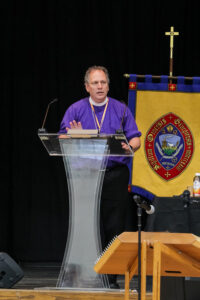 Kindle our hearts and awaken hope.
Kindle our hearts and awaken hope.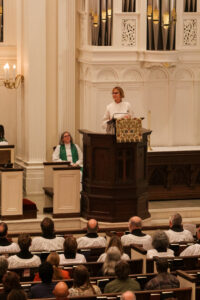 Speak God, for this servant is listening.
Speak God, for this servant is listening.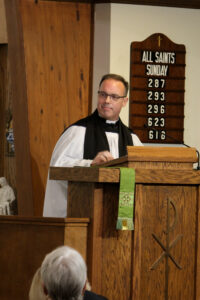 When the weather is nice, one of the things I enjoy is grilling on the back patio of our home. When cooking outside, I use lump charcoal, which means that the process of starting the fire is not immediate like with a gas grill. Those of you who are familiar with lump charcoal know that it is not uniform in shape like manufactured briquets that are mostly the same size. I sometimes think of this form of grilling as being similar to cooking over a campfire. The lumps of charcoal, in a variety shapes and densities, must be stacked in such a way as to allow for air to flow through the heap. After lighting the stack, I make sure the bottom and top vents are open to allow for the greatest amount of air to flow and feed the smoldering flame. After about 15 to 20 minutes, I usually return to find the embers ablaze with fire and ready for whatever needs to be cooked.
When the weather is nice, one of the things I enjoy is grilling on the back patio of our home. When cooking outside, I use lump charcoal, which means that the process of starting the fire is not immediate like with a gas grill. Those of you who are familiar with lump charcoal know that it is not uniform in shape like manufactured briquets that are mostly the same size. I sometimes think of this form of grilling as being similar to cooking over a campfire. The lumps of charcoal, in a variety shapes and densities, must be stacked in such a way as to allow for air to flow through the heap. After lighting the stack, I make sure the bottom and top vents are open to allow for the greatest amount of air to flow and feed the smoldering flame. After about 15 to 20 minutes, I usually return to find the embers ablaze with fire and ready for whatever needs to be cooked.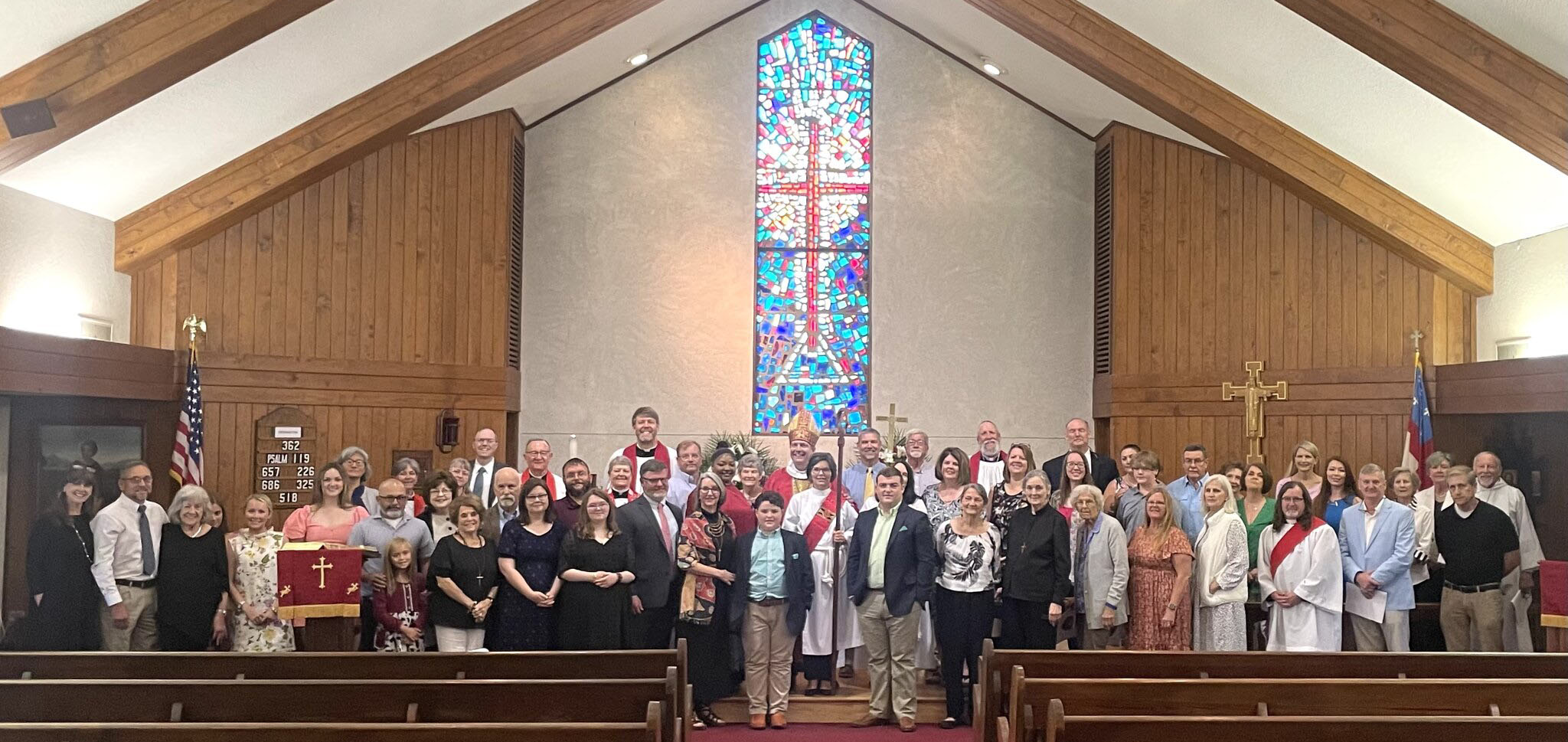
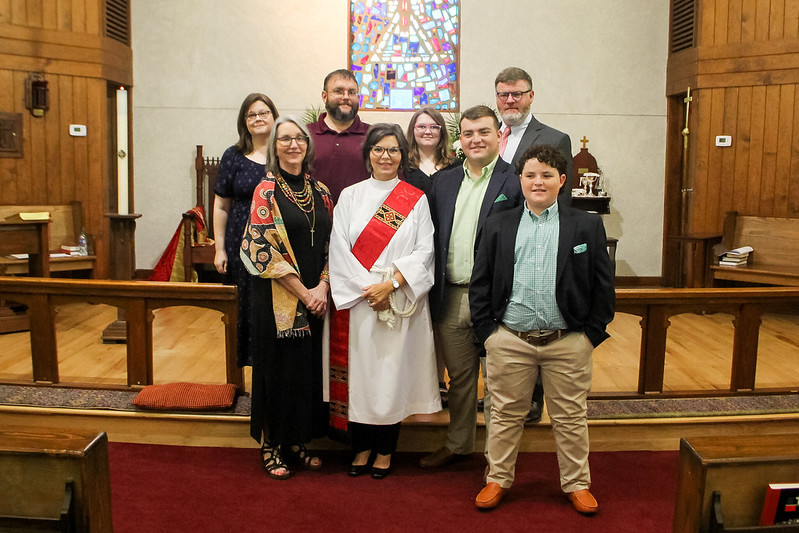 After meeting Dave at college, falling in love and marrying, the two tried to find a church home only to discover that they were miserable sinners as they had their feet metaphorically dangled over the flames of hell. While raising kids, they took a break from church. That is when Shayna’s old softball coach’s pleas to go to church with him broke through. Dale Jones persistent invitation finally reached the point where she could not keep turning him down. Shayna says of coming into this beautiful church, “I remember that first visit so well. Yes, we were a little overwhelmed with keeping up with the prayer book, and the kneeling and standing. But, [she added] we felt the love, the genuine spirit of the people, the closeness of God. I truly felt the spirit of Jesus.”
After meeting Dave at college, falling in love and marrying, the two tried to find a church home only to discover that they were miserable sinners as they had their feet metaphorically dangled over the flames of hell. While raising kids, they took a break from church. That is when Shayna’s old softball coach’s pleas to go to church with him broke through. Dale Jones persistent invitation finally reached the point where she could not keep turning him down. Shayna says of coming into this beautiful church, “I remember that first visit so well. Yes, we were a little overwhelmed with keeping up with the prayer book, and the kneeling and standing. But, [she added] we felt the love, the genuine spirit of the people, the closeness of God. I truly felt the spirit of Jesus.”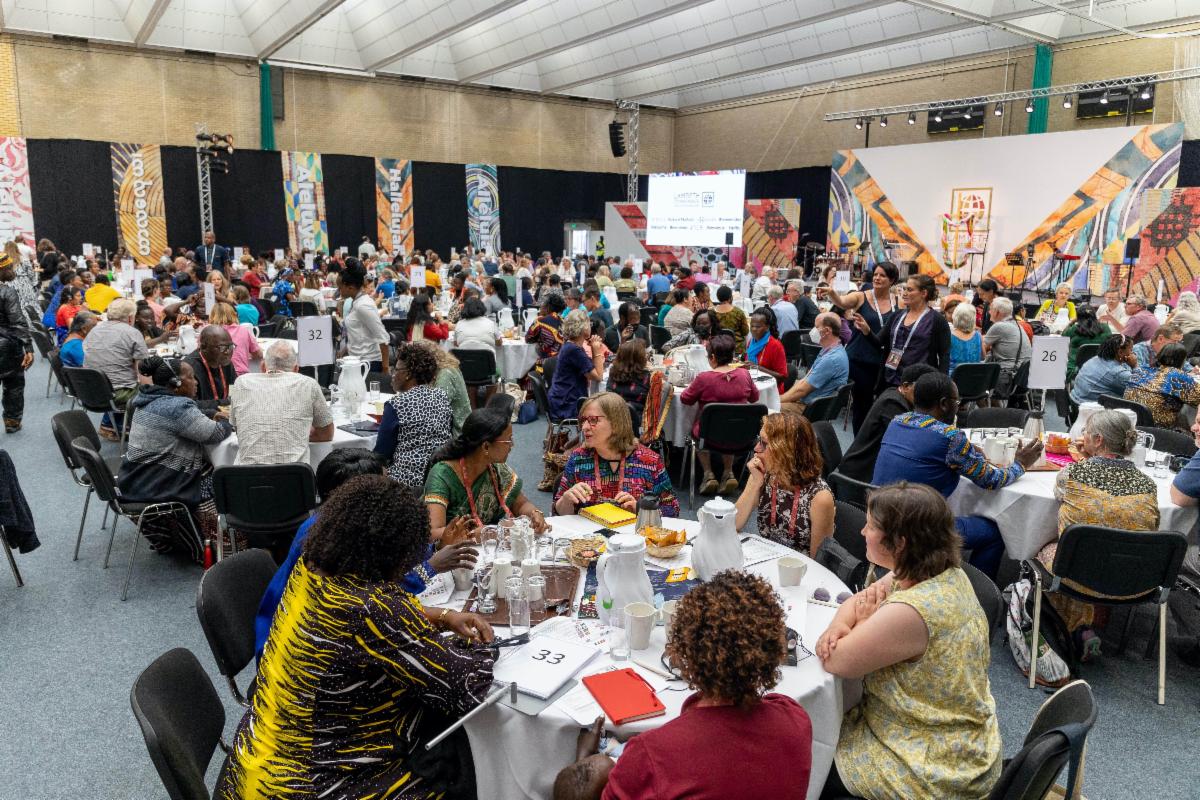 The Lambeth Conference—as an introvert, I both looked forward to and dreaded attending. From meeting with other spouses of Bishops (via Zoom instead of in-person because of Covid), I learned that we would be broken into small groups of 8-10 with other spouses from around the globe. Which meant, I was sure, that I would have to hear the simple phrase that accelerates the hearts of introverts: Let’s go around and introduce ourselves.
The Lambeth Conference—as an introvert, I both looked forward to and dreaded attending. From meeting with other spouses of Bishops (via Zoom instead of in-person because of Covid), I learned that we would be broken into small groups of 8-10 with other spouses from around the globe. Which meant, I was sure, that I would have to hear the simple phrase that accelerates the hearts of introverts: Let’s go around and introduce ourselves.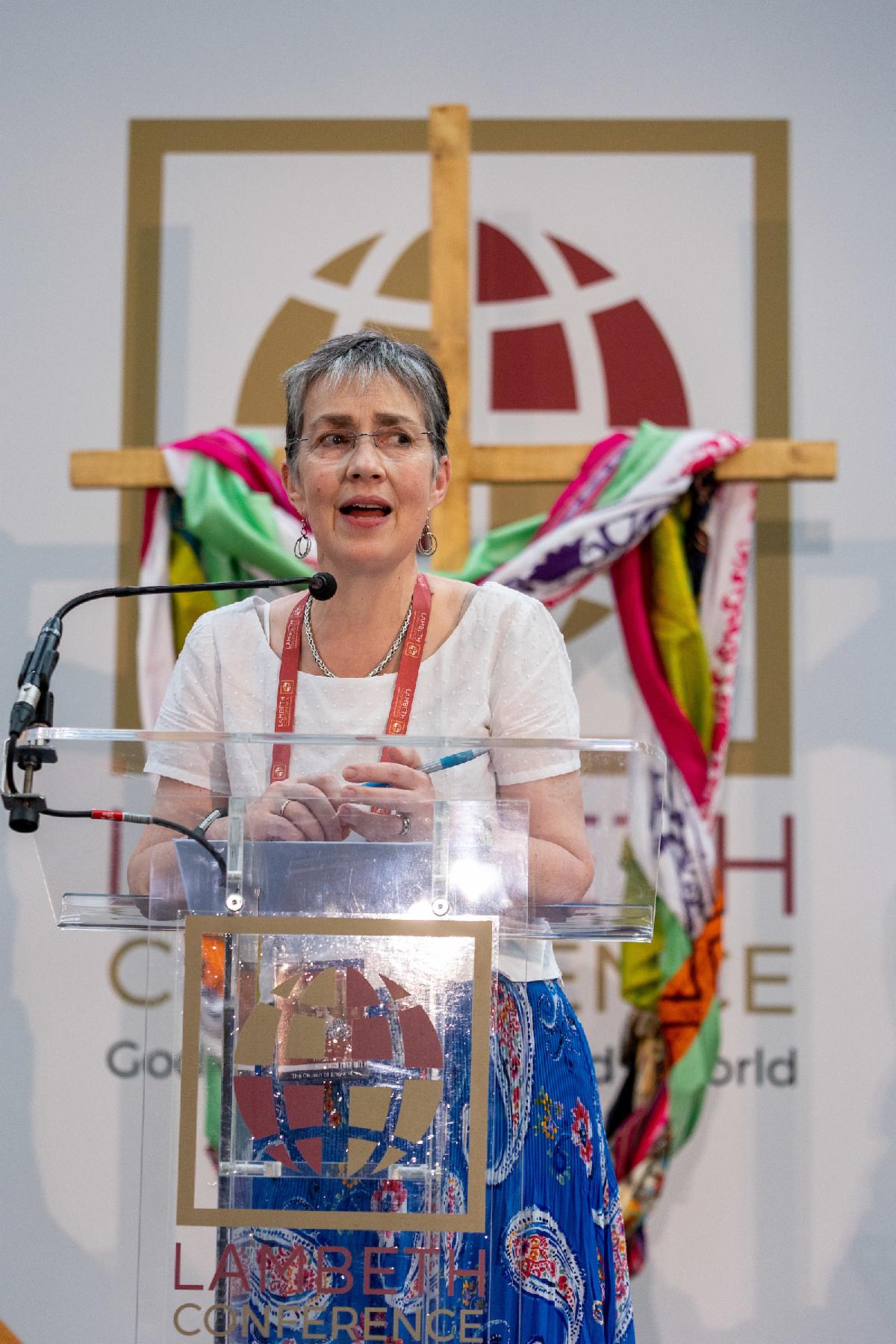 Working with the app also helped me to acquaint myself with some of the spouses attending Lambeth. So, the first time I was asked to introduce myself, I was already familiar with a number of spouses. (photo of Caroline Welby)
Working with the app also helped me to acquaint myself with some of the spouses attending Lambeth. So, the first time I was asked to introduce myself, I was already familiar with a number of spouses. (photo of Caroline Welby)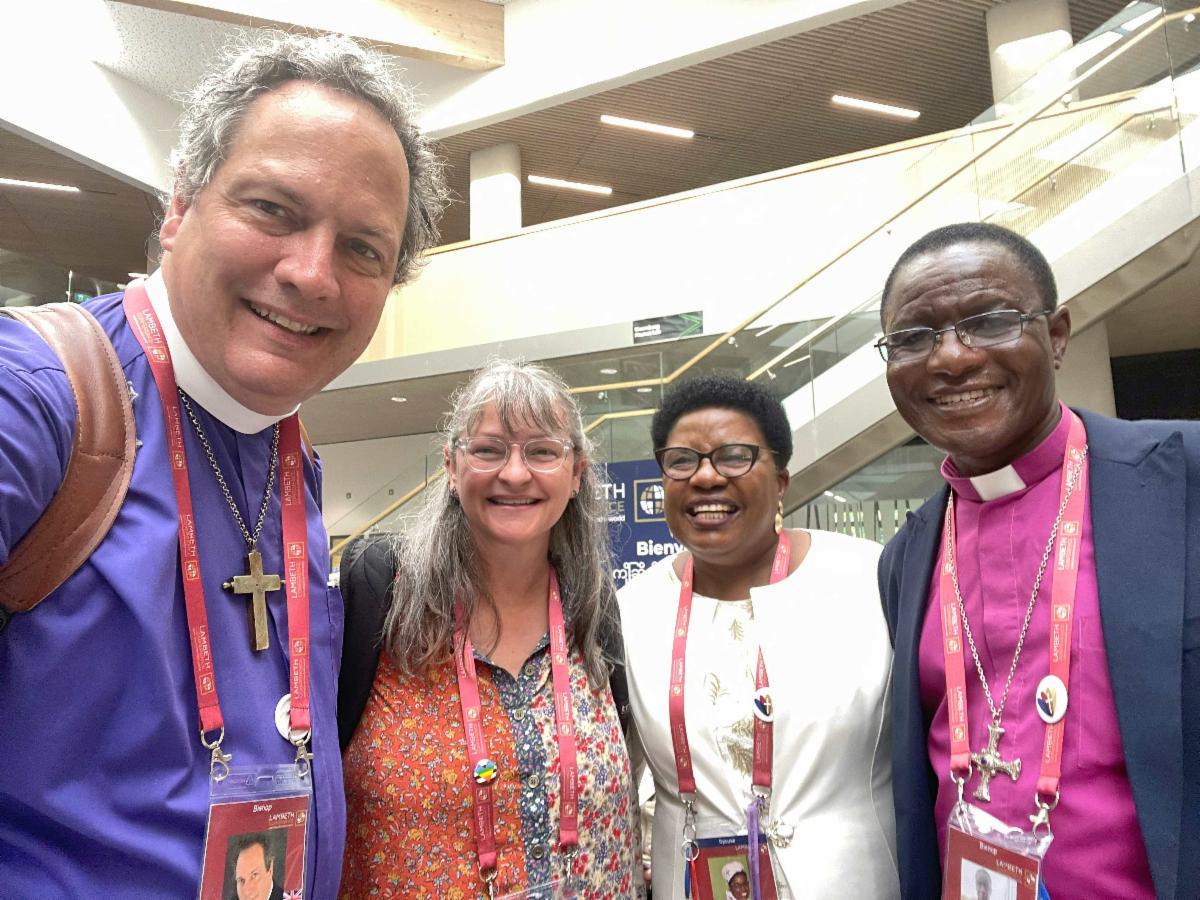 We would then break up into our small group Bible studies with the Bishops crossing the street to gather at the Parkwood Apartments in small groups and the spouses hurrying over to Venue 2 to gather at our round tables. Here we would look at the verses we had just heard about and speak to them in what became the favorite phrase at the Lambeth Conference: in my context. Because the gathered bishops and spouses were from more than 160 countries from around the world, the context for a spouse in South Sudan was different than the context for a spouse in Pakistan, which was different for a spouse in Malaysia, which was different from a spouse in America . . .
We would then break up into our small group Bible studies with the Bishops crossing the street to gather at the Parkwood Apartments in small groups and the spouses hurrying over to Venue 2 to gather at our round tables. Here we would look at the verses we had just heard about and speak to them in what became the favorite phrase at the Lambeth Conference: in my context. Because the gathered bishops and spouses were from more than 160 countries from around the world, the context for a spouse in South Sudan was different than the context for a spouse in Pakistan, which was different for a spouse in Malaysia, which was different from a spouse in America . . .
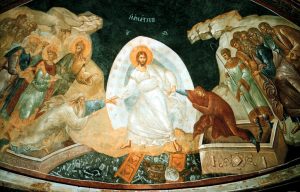 I am reminded of the Anastasis, that great icon of Holy Saturday where Jesus has descended to the dead and is bringing Adam and Eve up from the grave. In iconography, the first two humans are buried there just East of Eden, which is also the foot of the cross. Christ’s glory is bound with his degradation in this place where worlds collide, the fallen and the redeemed. Jesus’ tomb will not be empty until Jesus empties Hell.
I am reminded of the Anastasis, that great icon of Holy Saturday where Jesus has descended to the dead and is bringing Adam and Eve up from the grave. In iconography, the first two humans are buried there just East of Eden, which is also the foot of the cross. Christ’s glory is bound with his degradation in this place where worlds collide, the fallen and the redeemed. Jesus’ tomb will not be empty until Jesus empties Hell. 
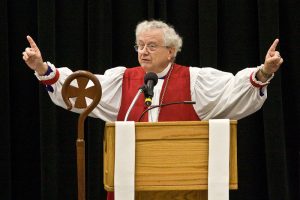 Bishop Logue and the Diocesan Staff have been working with the Louttit family on plans the funeral for the Ninth Bishop of Georgia, the Rt. Rev. Henry I. Louttit, Jr.
Bishop Logue and the Diocesan Staff have been working with the Louttit family on plans the funeral for the Ninth Bishop of Georgia, the Rt. Rev. Henry I. Louttit, Jr. 
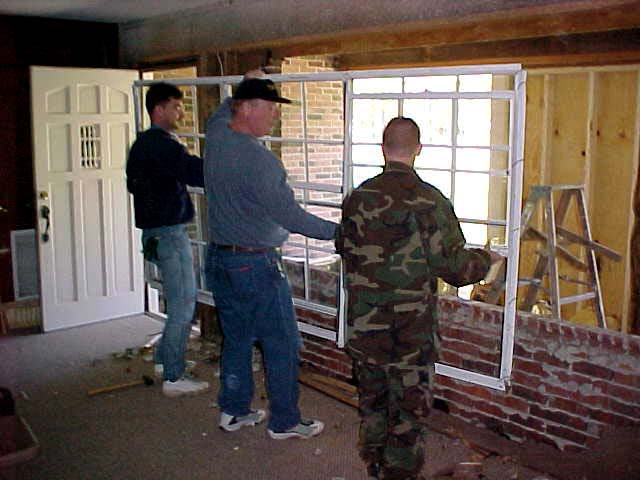 And so we began. We took the molding from around the windows and peeled off the paneling. Another parishioner arrived with his Middle Schooler son. He was a sergeant with the St. Marys Police Department. He suggested the next step, “We need to get the windows out. We all know what to do there.”
And so we began. We took the molding from around the windows and peeled off the paneling. Another parishioner arrived with his Middle Schooler son. He was a sergeant with the St. Marys Police Department. He suggested the next step, “We need to get the windows out. We all know what to do there.”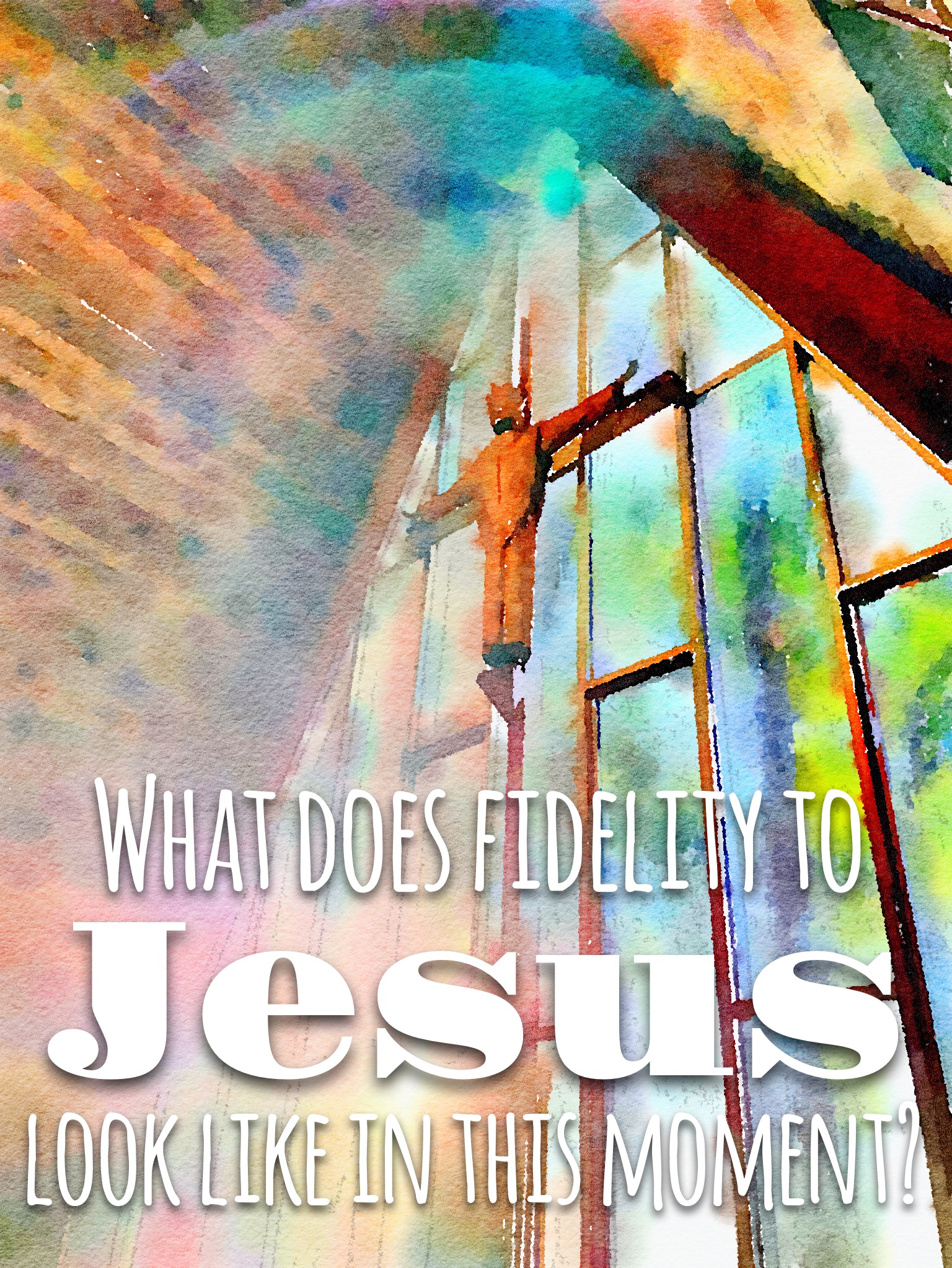 Bishop Rob Wright of the Diocese of Atlanta, offered me a clarifying question this year. One he honed while taking a class in Inquiry-Driven Leadership at MIT’s Sloan School of Management. The professor challenged the executives in the program to craft a question appropriate for their business that would cut to the heart of the essentials for their work. Rob’s question became: What does fidelity to Jesus look like in this moment?
Bishop Rob Wright of the Diocese of Atlanta, offered me a clarifying question this year. One he honed while taking a class in Inquiry-Driven Leadership at MIT’s Sloan School of Management. The professor challenged the executives in the program to craft a question appropriate for their business that would cut to the heart of the essentials for their work. Rob’s question became: What does fidelity to Jesus look like in this moment?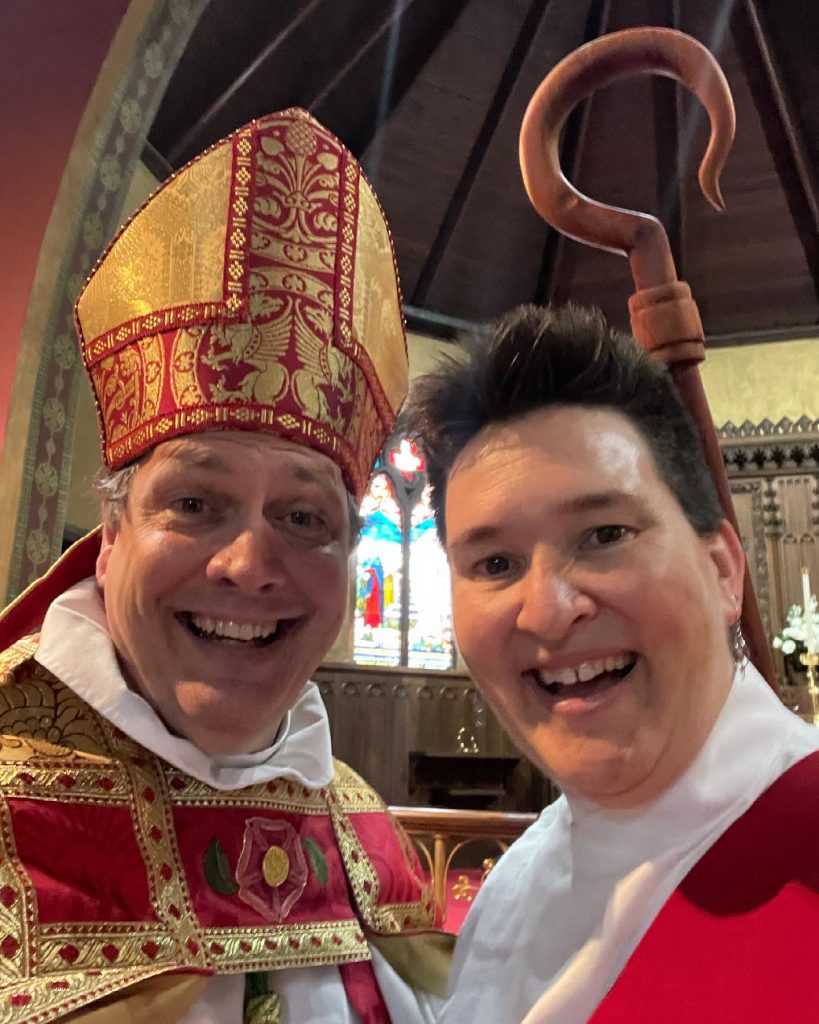 This is not to say that Susan was a stranger to church. Not by a long shot. She was baptized at Christ Episcopal Church in Exeter, New Hampshire about two months after her birth. She stood up for her place in the church at an early age too when the Rector did not understand her wanting to be a shepherd instead of an angel as boys were shepherds and girls were angels. But she was a budding thespian and Susan knew Shepherds get to play fear, which is a way better role. She did prevail and soon after began to acolyte and in a few years was confirmed.
This is not to say that Susan was a stranger to church. Not by a long shot. She was baptized at Christ Episcopal Church in Exeter, New Hampshire about two months after her birth. She stood up for her place in the church at an early age too when the Rector did not understand her wanting to be a shepherd instead of an angel as boys were shepherds and girls were angels. But she was a budding thespian and Susan knew Shepherds get to play fear, which is a way better role. She did prevail and soon after began to acolyte and in a few years was confirmed. Susan listened to God telling her to go to church. She showed up only to find as she would later say, “I hard every single prayer, reading, and hymn, and the entire package was an unmistakable message: “You are loved. You always have been loved. And I will always love you.”
Susan listened to God telling her to go to church. She showed up only to find as she would later say, “I hard every single prayer, reading, and hymn, and the entire package was an unmistakable message: “You are loved. You always have been loved. And I will always love you.” We all know the love of Jesus, the Good Shepherd who leaves the 99 sheep to go after the one that is lost. In our own families, in our workplaces, and among our friends, you and I are already deployed where God needs us to be there for people we already know to play the role that Mother Lee Shafer played in Susan’s life of being the sounding board for that feral cat stage of trying to trust God and God’s church. And in this effort, the real work is that of the Holy Spirit. I see this in how the Spirit was acting in Susan’s life to draw her back in to the Body of Christ. I have experienced this in my own life. And I have seen it in others who God has put in my path, where the Holy Spirit is already with them. We just have to be a part of affirming that message is real: You are loved. You always have been loved. And God will always love you.
We all know the love of Jesus, the Good Shepherd who leaves the 99 sheep to go after the one that is lost. In our own families, in our workplaces, and among our friends, you and I are already deployed where God needs us to be there for people we already know to play the role that Mother Lee Shafer played in Susan’s life of being the sounding board for that feral cat stage of trying to trust God and God’s church. And in this effort, the real work is that of the Holy Spirit. I see this in how the Spirit was acting in Susan’s life to draw her back in to the Body of Christ. I have experienced this in my own life. And I have seen it in others who God has put in my path, where the Holy Spirit is already with them. We just have to be a part of affirming that message is real: You are loved. You always have been loved. And God will always love you.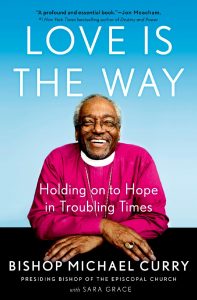 The Diocese will read together Love is the Way by Presiding Bishop Michael Curry as the 2021 1Book1Diocese pick.
The Diocese will read together Love is the Way by Presiding Bishop Michael Curry as the 2021 1Book1Diocese pick.